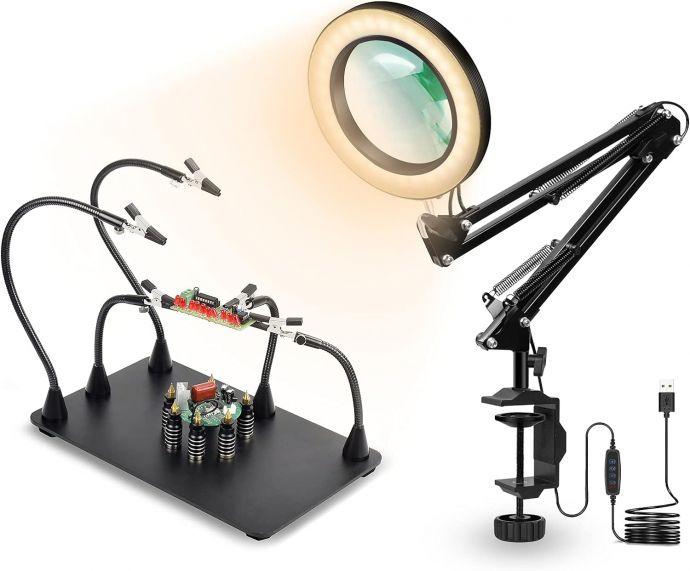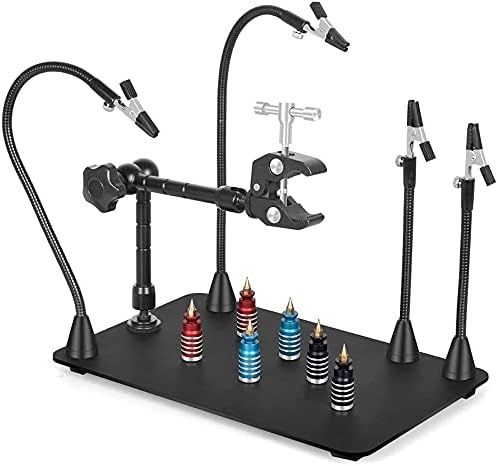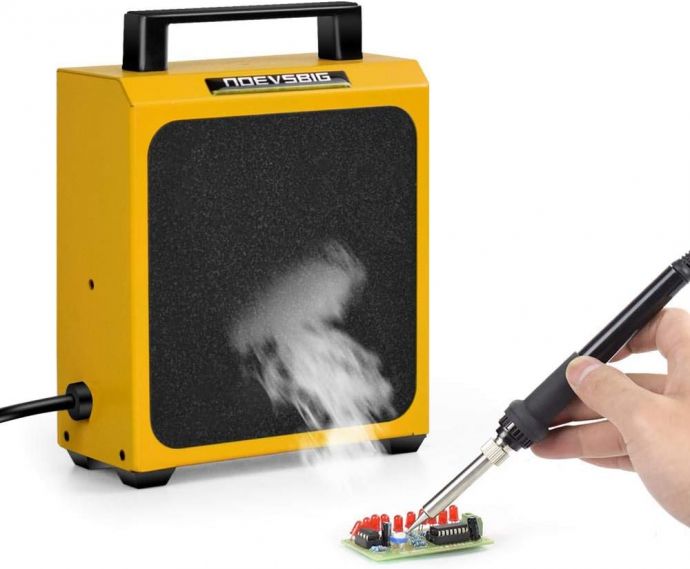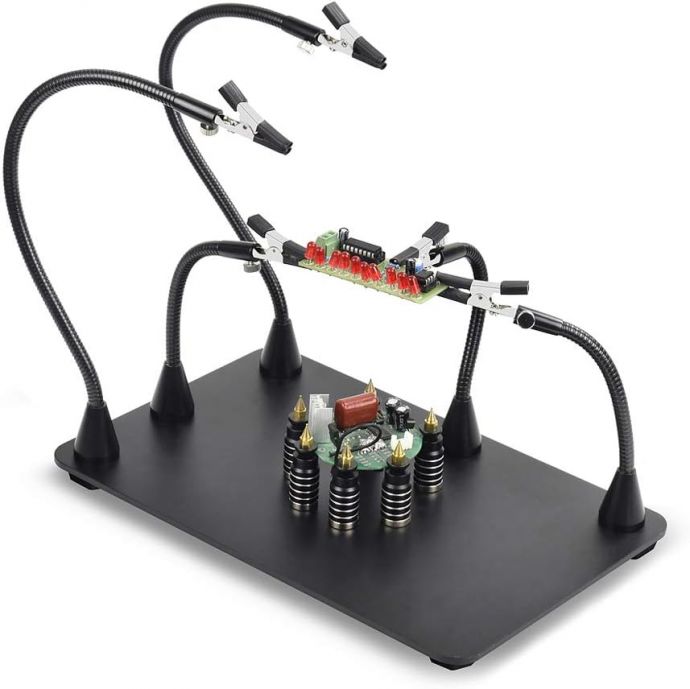In today’s rapidly evolving tech landscape, even the most traditional tools are getting innovative upgrades. One such staple of the electronics workshop is the soldering station. These stations are crucial for anyone from hobbyists to professionals who engage in electronic repairs, DIY projects, or intricate circuitry work. A critical component that has seen a major transformation is the "helping hands" tool, which typically assists in holding components steady. Now, with the integration of advanced camera mounts, the ordinary soldering station is being revolutionized.
**The Traditional Role of Helping Hands**

Helping hands are indispensable in a soldering setup for holding circuit boards, wires, and other components still while you work. Traditionally, these tools consist of a set of alligator clips mounted on flexible arms. They address the fundamental challenge of soldering: the need for an extra pair of hands. Despite their simplicity, they have remained largely unchanged for decades.
However, as electronic components become increasingly miniaturized, precision in soldering work has become more crucial than ever. This is where the convergence of technology and traditional tools comes into play.
**The Advent of Technology in Soldering**

The inclusion of advanced technology such as camera mounts has transformed how we perceive and use soldering stations. By integrating high-resolution cameras with flexible mounts, a soldering station can become a highly efficient workstation for detailed projects.
Camera mounts affixed to helping hands allow users to zoom in on their work, providing clear, close-up views of the area being soldered. This enhancement is invaluable for inspecting small and intricate components where even a minor mistake can lead to a non-functional board. A camera-equipped station means no longer hunching over your work, squinting under a table lamp. Instead, you can project live feeds onto a monitor, maintaining a comfortable posture and reducing eye strain.
**Benefits of Camera-Integrated Helping Hands**

1. **Enhanced Precision and Accuracy**: The high-resolution output from mounted cameras provides detailed imagery, allowing you to make precise soldering connections. Tiny components and fine-pitch integrated circuits can be clearly observed, leading to a decrease in errors and rework.
2. **Real-Time Monitoring and Documentation**: The use of cameras makes it easy to document projects. With the ability to take high-quality snapshots or record videos, you can save work progress, conduct training sessions, or create tutorials. This documentation can be invaluable for educational purposes or when troubleshooting future issues.
3. **Ergonomics and Comfort**: Traditional soldering often requires leaning in and craning your neck. By projecting work onto a screen, users can maintain better posture, thus reducing physical strain and increasing overall productivity.

4. **Remote Assistance and Collaboration**: With the ability to transmit work in real-time, collaboration becomes seamless. Whether you’re consulting colleagues, seeking advice from experts, or teaching students, the integration of camera technology facilitates a more interactive and educational experience.
5. **Expanded Functionality**: Camera mounts aren’t just about viewing. Many setups allow for adjustments in lighting and angles, providing flexibility that enhances work conditions. Some advanced models even integrate magnification adjustments, making them versatile tools for any task requiring fine visual work.
**Technological Specifications of Modern Camera Mounts**

Not all camera mounts are created equal, and choosing the right one for your needs is essential. Consider these features:
- **Resolution**: High-definition (1080p or 4K) cameras provide clear, detailed imagery crucial for precision work.
- **Frame Rate**: A higher frame rate ensures smooth motion capture, which is especially important for real-time monitoring.
- **Magnification**: Adjustable zoom capabilities allow for detailed inspection at varying levels. Optical zoom is preferred over digital for clarity.

- **Lighting**: Integrated LED lighting can illuminate the workspace effectively, reducing shadows and enhancing visibility.
- **Connectivity**: Cameras with USB or Wi-Fi connections make it easy to interface with computers and other devices for projecting images or recordings.
**Choosing the Right Setup for Your Needs**
When selecting a camera mount integration for your soldering station, consider your specific needs. Are you a hobbyist or a professional? Will you use it for instructional purposes or personal projects? The answers will guide your choice.

For those prioritizing educational use, a setup with strong recording features and internet connectivity might be ideal for creating tutorials. Professionals needing precision will benefit from high-resolution cameras with effective magnification and lighting adjustments.
**Future Directions and Innovations**
The integration of camera technology into soldering stations is not merely a trend but a glimpse into the future of electronics workspaces. As technology evolves, we expect further advancements like augmented reality (AR) to provide overlay guides on screens, helping users follow paths for complex circuits and identifying components in real-time.
Moreover, increasing integration with software could offer interactive interfaces, guiding users through steps in a repair or build process, potentially incorporating artificial intelligence (AI) that learns and provides suggestions based on previous tasks and common practices.
**Conclusion**
The transformation from traditional helping hands to technologically advanced camera mounts in soldering stations represents a significant leap forward in electronics work. By enhancing precision, comfort, and collaboration, these innovations are not only improving the quality of work but also revolutionizing how we approach the challenges of soldering and electronics repair.
As this technology becomes more accessible, it will undoubtedly become a standard in workshops and educational settings worldwide, propelling the field of electronics into an era of unprecedented capability and collaboration. Whether you're just starting or an experienced professional, embracing these advancements will open up new opportunities for growth, learning, and creativity in your electronic endeavors.









